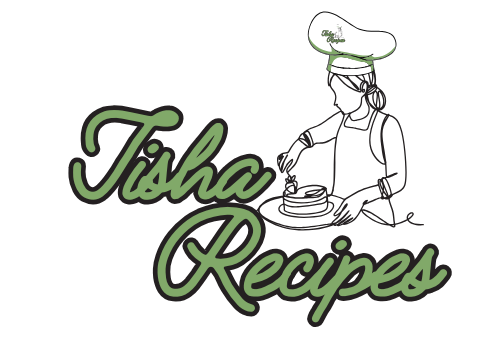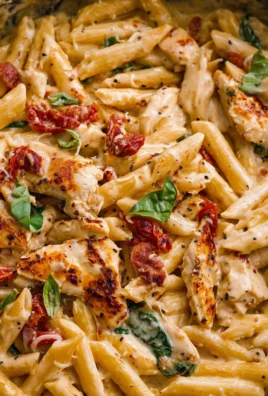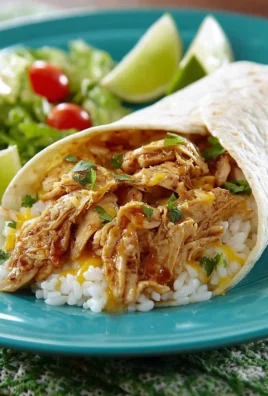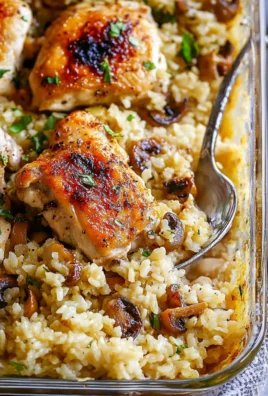
Chicken Tikka Masala is a dish that has become synonymous with rich flavors and cultural fusion. With its creamy, spiced tomato-based sauce and tender, smoky chunks of chicken, it is a beloved comfort food in households and restaurants worldwide. Beyond its taste, Chicken Tikka Masala embodies the blending of culinary traditions, reflecting the rich history of Indian cuisine and its influence on global food culture.
Its popularity spans continents, from its reputed origins in the kitchens of South Asian chefs in Britain to its recognition as one of the most ordered dishes in Indian restaurants globally. This dish tells a story of migration, adaptation, and the universal love for bold and satisfying flavors.
The Origins of Chicken Tikka Masala
A Dish Born of Cultural Exchange
The history of Chicken Tikka Masala is as layered as its flavors. While its precise origins remain a topic of debate, most accounts trace its creation to the South Asian immigrant community in Britain during the 20th century. These chefs, seeking to cater to British palates, adapted traditional Indian recipes to incorporate creamier sauces, leading to the development of this now-iconic dish.
One popular theory suggests that Chicken Tikka Masala was created in the 1960s by a Bangladeshi chef in Glasgow, Scotland. According to the tale, a customer complained that his chicken tikka was too dry. In response, the chef improvised by adding a tomato-based sauce enriched with cream and spices, creating what we now recognize as Chicken Tikka Masala.
Influences from Butter Chicken
Some culinary historians argue that Chicken Tikka Masala may have been inspired by the Indian dish butter chicken (murgh makhani), which originated in Delhi in the mid-20th century. Butter chicken similarly combines grilled chicken with a rich, creamy tomato sauce. The key difference lies in the spice profile and preparation, with Chicken Tikka Masala often featuring a slightly tangier and spicier flavor.
Evolution into a Global Phenomenon
Over the decades, Chicken Tikka Masala has evolved into a global favorite, adapting to local ingredients and tastes. In the United States, the sauce might include additional spices or vegetables, while in Britain, it has become so beloved that it was once dubbed a “national dish.” Its rise to prominence highlights the dish’s adaptability and universal appeal.
Cultural Significance
A Symbol of Fusion Cuisine
Chicken Tikka Masala represents more than just a meal; it is a culinary bridge between cultures. Born from the intersection of South Asian culinary traditions and Western preferences, it symbolizes the adaptability and creativity of immigrant chefs. The dish’s success underscores how food can transcend cultural boundaries, bringing people together through shared enjoyment.
Recognition and Popularity
In Britain, Chicken Tikka Masala has been hailed as a national favorite, often cited alongside fish and chips or Sunday roasts as emblematic of the country’s diverse food culture. In the United States, it is a staple in Indian-American restaurants, introducing many diners to the world of Indian spices and flavors. The dish’s inclusion on menus worldwide has helped elevate Indian cuisine’s profile, making it a household name.
Modern Interpretations
Today, Chicken Tikka Masala continues to inspire innovation. Chefs experiment with plant-based versions, regional spice blends, and unique pairings to put their spin on the classic recipe. These modern interpretations reflect the dish’s dynamic nature and its ability to adapt while maintaining its core identity.
Why Chicken Tikka Masala is Universally Loved
A Harmony of Flavors
The key to Chicken Tikka Masala’s enduring popularity lies in its perfectly balanced flavor profile. The combination of marinated, grilled chicken with a spiced, creamy tomato sauce offers a harmonious blend of smoky, tangy, and savory notes. The addition of cream or yogurt tempers the heat of the spices, making the dish accessible to a wide range of palates.
A Comfort Food Staple
The dish’s creamy, rich sauce makes it an ideal comfort food, perfect for pairing with warm naan bread or fluffy basmati rice. Its satisfying flavors and textures create a sense of indulgence that appeals to diners of all ages.
Versatility
Chicken Tikka Masala’s adaptability is another factor in its widespread appeal. While traditionally made with chicken, the recipe can be easily adjusted to include other proteins or plant-based alternatives like tofu or paneer. The sauce itself is a versatile base that can be used in various recipes, from pasta dishes to casseroles.
Nutritional Profile and Benefits
While Chicken Tikka Masala is undoubtedly a rich and indulgent dish, it also offers nutritional benefits when prepared mindfully:
- Protein from Chicken
The marinated chicken provides a high-quality source of lean protein, essential for muscle repair and overall health. - Spices for Health
The spices used in Chicken Tikka Masala, such as turmeric, cumin, and ginger, are known for their anti-inflammatory and antioxidant properties. Turmeric, in particular, contains curcumin, which may support immune health and reduce inflammation. - Tomatoes for Vitamins
The tomato-based sauce is a source of vitamins A and C, as well as potassium and lycopene, an antioxidant linked to heart health. - Customizable Ingredients
By adjusting the cream or butter content and incorporating additional vegetables, the dish can be made lighter and more nutrient-dense.
Modern Relevance of Chicken Tikka Masala
A Gateway to Indian Cuisine
For many diners, Chicken Tikka Masala serves as an introduction to Indian food. Its familiar flavors and approachable heat level make it an excellent starting point for exploring the diverse and vibrant world of Indian cooking.
Home Cooking and Meal Prep
As more people experiment with international cuisines at home, Chicken Tikka Masala has become a favorite for meal prep and family dinners. The recipe’s components—marinated chicken and a spiced sauce—can be prepared in advance, making it convenient for busy lifestyles.
Global Culinary Influence
The popularity of Chicken Tikka Masala has inspired chefs worldwide to create fusion dishes, such as Tikka Masala pizza, pasta, and wraps. These creative adaptations showcase the dish’s versatility and its ability to inspire culinary innovation.
Detailed Ingredients and Step-by-Step Preparation
Creating the perfect Chicken Tikka Masala requires careful attention to each step of the process, from selecting high-quality ingredients to mastering the cooking techniques. This section provides an in-depth look at the key components of the dish, the marination process, and the techniques needed to achieve the rich, creamy sauce that defines this iconic recipe.
Essential Ingredients and Their Roles
1.1. Chicken
- Preferred Cuts:
Boneless chicken thighs are the traditional choice for their tenderness and ability to stay juicy during grilling. Chicken breast can also be used for a leaner option but requires careful attention to prevent dryness. - Preparation Tips:
Trim excess fat and cut the chicken into bite-sized pieces to ensure even cooking.
1.2. Yogurt for Marinade
- Purpose:
Yogurt acts as the base of the marinade, tenderizing the chicken and adding tanginess. The lactic acid in yogurt helps break down proteins, making the meat succulent. - Best Choice:
Use full-fat, plain yogurt for optimal results. Greek yogurt can be used for a thicker marinade.
1.3. Aromatics
- Garlic and Ginger:
Essential for flavor depth, garlic and ginger are finely minced or made into a paste to evenly coat the chicken. - Onions:
Onions are the foundation of the sauce, lending sweetness and body when cooked down.
1.4. Spices
The spices in Chicken Tikka Masala define its flavor profile. Common spices include:
- Turmeric: For color and a warm, earthy flavor.
- Cumin: Adds nuttiness and depth.
- Coriander: Brings a subtle citrusy note.
- Paprika: Enhances the color and smoky flavor.
- Garam Masala: A blend of warm spices like cinnamon, cloves, and cardamom for complexity.
- Red Chili Powder: Adjust to taste for heat.
1.5. Tomatoes and Cream
- Tomatoes: Fresh, ripe tomatoes or canned tomato puree form the sauce’s base. They provide acidity and richness.
- Cream: Heavy cream adds a velvety texture and balances the spices. Coconut milk can be used as a dairy-free alternative.
1.6. Optional Ingredients
- Fenugreek Leaves: Known as kasuri methi, these dried leaves add a distinctive, slightly bitter flavor.
- Butter or Ghee: Enhances the richness of the sauce.
Marination Process
Marination is a crucial step in Chicken Tikka Masala, infusing the chicken with flavor and ensuring it remains tender during cooking.
2.1. Preparing the Marinade
- Combine the following ingredients in a bowl:
- 1 cup plain yogurt
- 1 tablespoon minced garlic
- 1 tablespoon grated ginger
- 1 teaspoon turmeric
- 1 teaspoon cumin
- 1 teaspoon paprika
- 1 teaspoon garam masala
- Juice of 1 lemon
- Salt to taste
2.2. Marinating the Chicken
- Add the chicken pieces to the marinade and mix thoroughly, ensuring each piece is evenly coated.
- Cover the bowl with plastic wrap and refrigerate for at least 4 hours, preferably overnight.
2.3. Tips for Better Marination
- Longer Marination: The longer the chicken marinates, the deeper the flavors will penetrate. Overnight marination is ideal.
- Proper Coating: Use a spoon or your hands to massage the marinade into the chicken.
- Avoid Overcrowding: If preparing a large batch, divide the chicken into smaller containers for even marination.
Cooking Techniques
3.1. Grilling the Chicken
The grilling step imparts the smoky, charred flavor characteristic of Chicken Tikka Masala.
- Traditional Method:
Use a tandoor oven for authentic results. Skewer the marinated chicken and cook until lightly charred and cooked through. - Grill or Stovetop Method:
- Preheat an outdoor grill or stovetop grill pan over medium-high heat.
- Oil the grates to prevent sticking.
- Place the chicken pieces on the grill, leaving space between them.
- Cook for 4–5 minutes per side or until charred and fully cooked.
- Oven Broiling Method:
- Preheat the oven to broil.
- Arrange the chicken pieces on a foil-lined baking sheet and broil for 8–10 minutes, turning halfway through.
3.2. Preparing the Sauce
The sauce is the heart of Chicken Tikka Masala, combining bold spices with creamy richness.
- Step 1: Sauté Aromatics
- Heat 2 tablespoons of oil or ghee in a large skillet over medium heat.
- Add finely chopped onions and sauté until golden brown, about 8–10 minutes.
- Step 2: Add Garlic, Ginger, and Spices
- Stir in 1 tablespoon minced garlic and 1 tablespoon grated ginger. Cook for 1–2 minutes until fragrant.
- Add spices: 1 teaspoon turmeric, 1 teaspoon cumin, 1 teaspoon coriander, 1 teaspoon paprika, and 1 teaspoon garam masala. Toast the spices for 1 minute to release their aroma.
- Step 3: Incorporate Tomatoes
- Add 2 cups of tomato puree or finely chopped tomatoes.
- Cook until the mixture thickens and the oil begins to separate, about 10–15 minutes.
- Step 4: Add Cream and Fenugreek
- Stir in 1 cup of heavy cream or coconut milk.
- Crush 1 teaspoon dried fenugreek leaves between your palms and add to the sauce.
- Step 5: Simmer and Combine
- Add the grilled chicken to the sauce and simmer for 10–15 minutes, allowing the flavors to meld. Adjust seasoning with salt and pepper.
Tips for Perfect Chicken Tikka Masala
4.1. Achieving a Creamy Sauce
- Blend the sauce before adding the chicken for an extra-smooth texture.
- Add a knob of butter at the end for a glossy finish.
4.2. Controlling Heat Levels
- Adjust the amount of red chili powder to suit your spice tolerance.
- Use sweet paprika for color without adding heat.
4.3. Enhancing Smokiness
- For a smoky aroma, use a charcoal-smoking technique:
- Heat a piece of charcoal until red-hot.
- Place it in a small bowl or foil cup and set it in the pan with the sauce.
- Cover the pan and let the smoke infuse the dish for 2–3 minutes.
Plating and Serving
Chicken Tikka Masala is traditionally served with accompaniments that balance its rich flavors.
5.1. Rice Options
- Basmati Rice: Fragrant and fluffy, basmati rice is the perfect companion to soak up the sauce.
- Jeera Rice: Add cumin seeds and a bay leaf to the rice for an aromatic twist.
5.2. Bread Pairings
- Naan: Soft, buttery naan bread is ideal for scooping up the creamy sauce.
- Roti or Paratha: Whole wheat flatbreads provide a hearty, rustic complement.
5.3. Side Dishes
- Raita: A cooling yogurt-based side with cucumber and mint.
- Pickles and Chutneys: Add tangy or spicy condiments for contrast.
- Vegetable Curries: Serve alongside lighter curries like aloo gobi or saag paneer.
Creative Variations, Serving Ideas, and Advanced Techniques
Chicken Tikka Masala is not only a timeless classic but also a versatile canvas for culinary creativity. By experimenting with alternative ingredients, exploring global twists, and perfecting the presentation, you can tailor the dish to suit diverse palates and occasions. This section dives into creative variations, pairing suggestions, advanced tips, and ways to repurpose leftovers for maximum enjoyment.
Creative Variations of Chicken Tikka Masala
1.1. Protein Substitutions
Chicken Tikka Masala’s flavorful sauce pairs well with a variety of proteins, allowing for endless customization:
- Paneer Tikka Masala: Replace chicken with paneer (Indian cottage cheese) for a vegetarian option. Marinate and grill the paneer just like the chicken for a smoky flavor.
- Seafood Tikka Masala: Use shrimp or firm white fish like cod or halibut. Reduce the cooking time to prevent overcooking the seafood.
- Lamb Tikka Masala: Swap chicken for tender chunks of lamb. Marinate the lamb overnight for better flavor absorption.
- Tofu Tikka Masala: For a vegan alternative, use extra-firm tofu. Press the tofu to remove excess water, then marinate and grill for added texture.
1.2. Vegan and Dairy-Free Adaptations
- Dairy-Free Marinade: Replace yogurt with a non-dairy alternative like coconut yogurt or cashew cream.
- Coconut Cream Sauce: Substitute heavy cream with coconut cream or cashew cream for a rich, vegan-friendly sauce.
- Plant-Based Butter: Use vegan butter to finish the sauce without compromising flavor.
1.3. Flavor Twists
- Spicy Masala: Increase the amount of red chili powder or add fresh green chilies for extra heat.
- Tangy Masala: Stir in a splash of tamarind paste or additional lemon juice for a tangier profile.
- Nutty Masala: Add ground almonds or cashews to the sauce for a creamier texture and a nutty undertone.
1.4. Regional and Global Variations
- British-Style Curry: Enhance the sauce with additional cream and butter for a milder, creamier version.
- South Indian Twist: Add curry leaves, mustard seeds, and coconut milk to create a South Indian-inspired version.
- Thai-Indian Fusion: Incorporate Thai red curry paste, lime leaves, and basil for a fusion of Indian and Thai flavors.
Perfect Pairings for Chicken Tikka Masala
2.1. Rice and Grains
- Basmati Rice: The traditional pairing, known for its fragrance and fluffy texture.
- Jeera Rice: Add cumin seeds and a touch of ghee to basmati rice for an aromatic twist.
- Quinoa: A protein-rich alternative that pairs well with the creamy sauce.
- Coconut Rice: Cook rice with coconut milk and a pinch of sugar for a subtly sweet complement.
2.2. Bread Options
- Naan: Soft and buttery naan is ideal for scooping up the sauce. Garlic naan adds an extra layer of flavor.
- Paratha: A flaky, layered flatbread that enhances the dish’s richness.
- Roti: A lighter, whole wheat option for a healthier pairing.
- Pita Bread: A Middle Eastern twist that works well for dipping.
2.3. Side Dishes
- Raita: A cooling yogurt-based side dish with cucumber, mint, or grated carrots.
- Pickles and Chutneys: Mango chutney or lime pickle adds a tangy contrast.
- Vegetable Curries: Pair with lighter vegetable dishes like aloo gobi, saag paneer, or chana masala.
- Salads: A simple cucumber-tomato salad with lemon vinaigrette refreshes the palate.
2.4. Beverages
- Lassi: Sweet or salty lassi made from yogurt is a traditional and refreshing accompaniment.
- Masala Chai: Spiced tea complements the warmth of the curry.
- Wine Pairings: A fruity, slightly sweet white wine like Riesling or a medium-bodied red like Pinot Noir pairs well.
- Beer: Light lagers or wheat beers balance the rich, spicy flavors.
Advanced Cooking and Presentation Tips
3.1. Perfecting the Sauce Texture
- Blending for Smoothness: Use an immersion blender or blend the sauce before adding the chicken for a velvety texture.
- Adding Glossiness: Stir in a knob of butter or a drizzle of ghee just before serving for a glossy finish.
3.2. Enhancing Smoky Flavors
- Charcoal Smoking Technique:
- Heat a piece of charcoal until red-hot.
- Place it in a small foil cup or bowl and set it in the pot with the sauce.
- Cover the pot and let the smoke infuse the dish for 2–3 minutes.
- Grill Marks: Ensure the chicken is grilled or broiled to achieve authentic charred edges.
3.3. Plating and Garnishing
- Layering: Serve the sauce first, then top with grilled chicken pieces for an elevated presentation.
- Herbs: Garnish with freshly chopped cilantro or mint for color and aroma.
- Toppings: Sprinkle with toasted nuts like almonds or cashews for crunch.
3.4. Serving in Style
- Family-Style Platters: Arrange the chicken and sauce on a large platter, surrounded by bowls of rice and bread.
- Individual Plates: Serve portions in shallow bowls with a dollop of raita and a wedge of lime.
- Copper Pots: Present the curry in traditional Indian-style copper or brass serving dishes for authenticity.
Repurposing Leftovers
Chicken Tikka Masala’s versatility makes it perfect for repurposing into new dishes:
4.1. Wraps and Sandwiches
- Spread leftover sauce on flatbread, add chicken pieces, and top with lettuce and onions for a quick wrap.
- Use the chicken and sauce as a filling for a sandwich or slider bun.
4.2. Tikka Masala Pasta
- Combine leftover sauce with cooked pasta and a splash of cream for an Indian-inspired pasta dish.
- Add grilled vegetables or paneer for extra texture.
4.3. Tikka Masala Pizza
- Use the sauce as a base for pizza, topped with chicken, red onions, bell peppers, and mozzarella cheese.
4.4. Rice Bowls
- Layer leftover chicken and sauce over rice or quinoa. Add steamed vegetables and a dollop of yogurt for a balanced meal.
4.5. Soup or Stew Base
- Thin the sauce with vegetable or chicken broth to create a flavorful soup. Add lentils or chickpeas for a hearty twist.
Frequently Asked Questions (FAQs)
Can I freeze Chicken Tikka Masala?
- Yes, both the chicken and sauce freeze well. Store them in an airtight container for up to three months. Thaw in the refrigerator overnight before reheating.
How can I adjust the spice level?
- Reduce red chili powder and use sweet paprika for mild heat. Add fresh chilies or cayenne for more heat.
What’s the best way to reheat Chicken Tikka Masala?
- Reheat gently on the stovetop over low heat, adding a splash of cream or water to restore the sauce’s consistency.
Can I make it ahead of time?
- Absolutely! The flavors deepen when the dish is made a day in advance. Store it in the refrigerator and reheat before serving.
Conclusion
Chicken Tikka Masala’s versatility, rich flavors, and adaptability make it a dish that continues to inspire creativity and culinary exploration. By experimenting with variations, enhancing its presentation, and repurposing leftovers, you can enjoy this classic dish in new and exciting ways. Whether preparing it for a special occasion or a casual meal, Chicken Tikka Masala is a testament to the enduring appeal of bold, flavorful cooking.
Celebrate its legacy by crafting your unique version, and let it become a staple in your culinary repertoire!




Leave a Comment